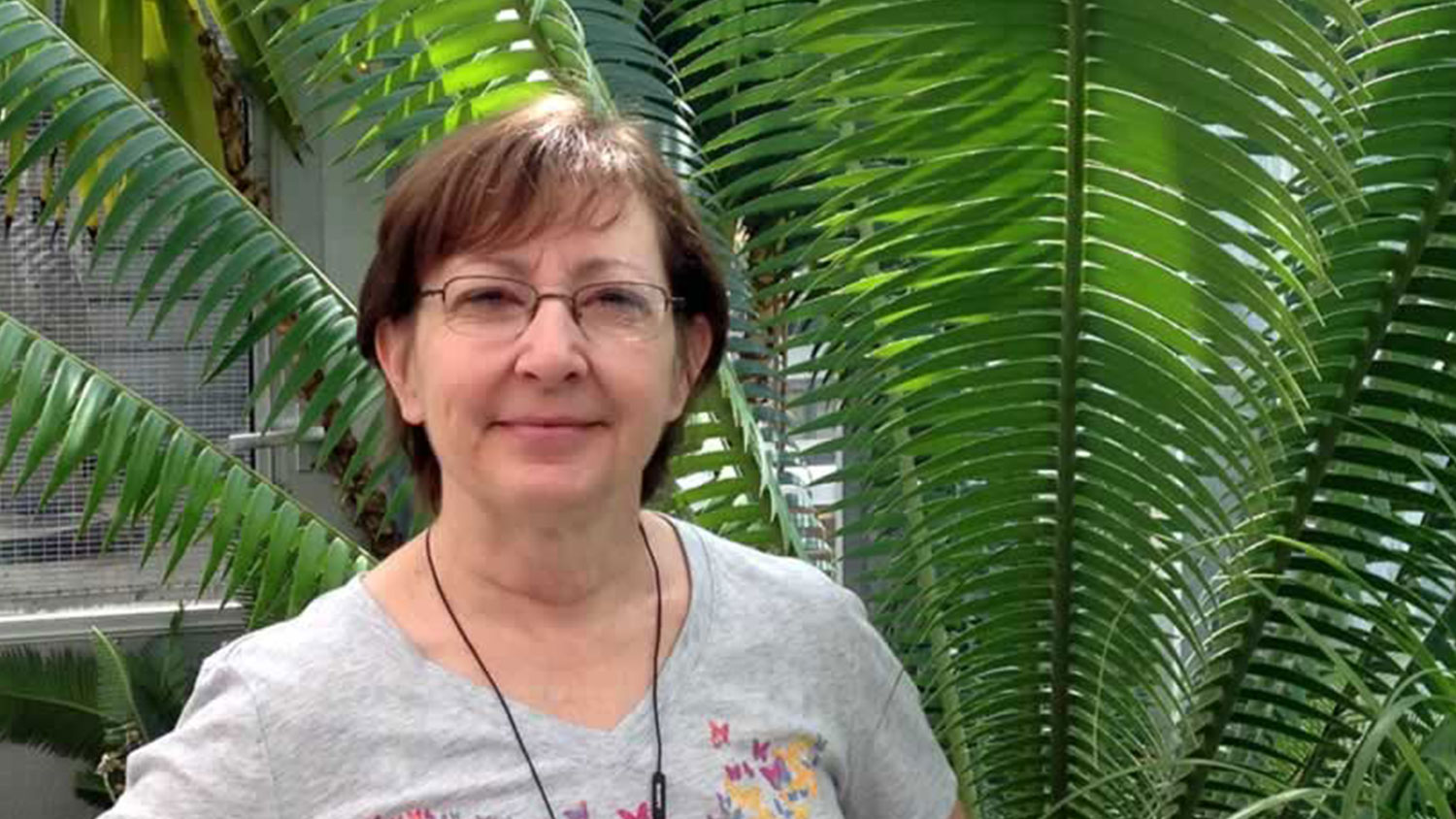
Diane Mays’ official title is teaching support specialist, but she’s more often known as conservatory curator for the Marye Ann Fox Teaching Laboratory, where’s she worked for more than 20 years.
Mays is an expert in plant care and plant propagation. We caught up with her to learn a little bit about maintaining the conservatory during this unusual time.
How has your day changed since March 16?
I have been working from home tackling computer projects that I normally don’t have time to do during my regular hours at the greenhouse. Sitting for long periods of time at a computer is quite different for me since my days are usually filled walking or standing. I am still working at the greenhouse between 12-20 hours per week caring for the plants in the teaching collections and making sure that the greenhouse facilities are operating as they should.
What is it like being on campus now?
It is very quiet. We are down to a skeleton crew of facilities personnel and a few other greenhouse users. The plants keep me company and there is no shortage of tasks to do, but I miss my co-workers, the students and other staff and faculty that frequented the greenhouses each day. I especially miss my student interns. I had several interns that were not able to complete their internships on campus with the plants, so unfortunately they were short-changed. I hope to see them back here on campus in the fall.
Why is it critical that you continue performing tasks on campus?
The greenhouses, and the plants within them, cannot be left to their own devices. There are thousands of plants which are permanent residences in the greenhouse and others that need to be germinated/pruned/propagated in some respect to get them ready for the next semester, regardless of whether students’ courses are held online or on campus.
The greenhouses have alarms in place should the temperatures reach a unacceptable high or low but the irrigation is not on an alert system, so it must be checked and performed every day. A lot of the irrigation has to be done by hand so we are coming in to take care of this.
What challenges are you facing in this new environment?
There are 24,000-square-feet of greenhouse space with 12 separate sections. Although walking through each section is typical, spraying the door handles to each section is a new normal.
Also making sure I have gloves on to prevent contaminating any surface that others might touch (although there are only a few others coming into the greenhouse) is constantly on my mind.
This job is also very much a team job. I am reminded every day that I have great co-workers who have always helped me out in the past, before the pandemic hit. Although I knew that I depended on them a lot before… now it has really been set in stone how much they were there for me. So those things that I can’t do on my own have to wait until the facility is opened back up to multiple caretakers here at one time.
What are you doing to stay safe?
Lots of hand washing, spraying my hands with isopropyl alcohol and not touching my face. I’m also not climbing ladders or other frequently needed, yet precarious, tasks in the greenhouse since no one else is around to help should I fall.
Any final words?
I have always loved my job but this situation has reaffirmed just how much I love it! I feel blessed to wake up each morning and go to a job that is challenging, fun, educational and I get to work with great people… students, staff and faculty.
I am anxious for things to return to normal and to see everyone again but for now, I will count my blessings.